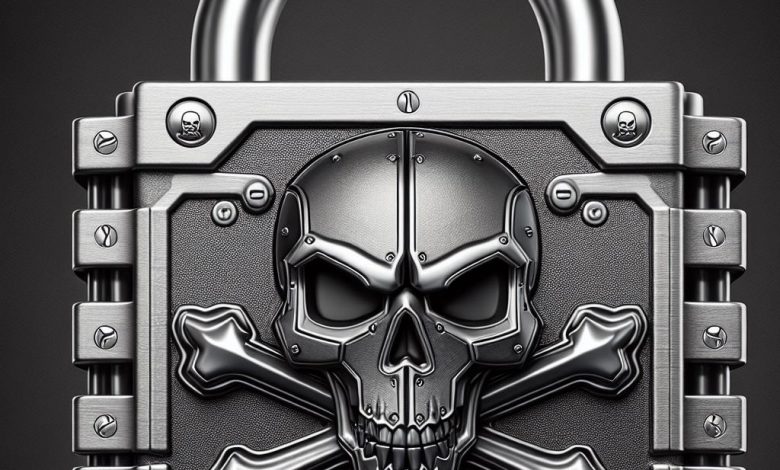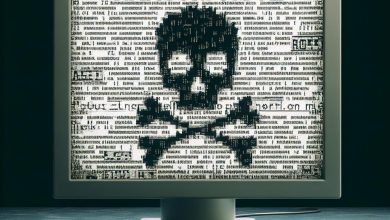
Table of Contents
Overview of AMBA Ransomware
AMBA ransomware is a type of malicious software that specifically targets Russian websites with the intention of encrypting critical files and demanding a ransom for their decryption. Upon successful infiltration into a system, AMBA ransomware initiates an encryption algorithm that locks files, making them inaccessible to the user. The distinctive characteristic of this ransomware is the extension it appends to encrypted files. It usually adds the extensions .AMBA or .RROD to the filenames which serves as a clear identifier of the attack. Once the AMBA ransomware completes the encryption process, it delivers its ransom demand through a note that it leaves on the affected computer. This note is typically named "ПРОЧТИ_МЕНЯ.txt", which translates to "READ_ME.txt" in English and contains instructions in Russian. The ransom note is meant to inform victims of the attack and provide them with the hackers' demands which usually involve payment in cryptocurrency in exchange for the decryption key. Victims are often urged to comply within a tight deadline, with threats that the cost for decryption will increase after the deadline passes or that the decryption key will be destroyed, leaving the files permanently encrypted. However, cybersecurity experts advise against paying the ransom as it does not guarantee the recovery of the encrypted files and further incentivizes the attackers.
Ransom Demands and Payment
The ransom note that accompanies the AMBA ransomware infection provides specific instructions for the victims. Server owners, upon discovering the intrusion and the encrypted state of their files, are prompted to establish contact with the cybercriminals behind AMBA via email. The contact information is typically included in the ransom note, where one or more email addresses are provided as the sole means of communication. In an attempt to ensure that the victims follow through with their demands, the operators of AMBA ransomware strongly warn against using third-party tools or seeking assistance from security researchers for the decryption of files. They may claim that such attempts could lead to permanent data loss or further corruption of the encrypted files. When it comes to the ransom payment, the criminals behind AMBA often expect to be paid in Bitcoin, which provides them with a degree of anonymity. They may include a Bitcoin wallet address in the ransom note where the victim is instructed to transfer the funds. The note might also include the amount of Bitcoin expected for the release of the decryption key, which is typically in line with the perceived ability of the victim to pay. However, even when a victim decides to pay the ransom, there are no guarantees that the files will be decrypted or that they will regain full access to their data. The attackers may fail to provide a working decryption key or may ignore the victim after payment. This lack of assurance is why many cybersecurity professionals and law enforcement agencies caution against paying the ransom, instead recommending that affected organizations focus on prevention, backup strategies, and incident response plans.
Characteristics of AMBA Ransomware
AMBA ransomware possesses a set of characteristics that align it with other known strains of ransomware, such as KimcilWare and CTB-Locker. These common traits are typically related to their methods of operation, encryption protocols, and the techniques they employ to extort money from their victims. One of the key features of AMBA is its use of an asymmetric encryption algorithm. Asymmetric encryption involves a pair of keys: a public key, which is used to encrypt the data, and a private key, which is necessary to decrypt the data. This ensures that only the attacker, who holds the private key, has the ability to unlock the encrypted files, thereby increasing the pressure on the victim to fulfill the ransom demand in order to retrieve the private key. Another similarity AMBA shares with ransomware like KimcilWare and CTB-Locker is the manner in which it penetrates systems, encrypts files, and communicates its demands through a ransom note. However, AMBA tends to vary mostly in the amount of ransom it demands from its victims. This figure can fluctuate greatly and might be based on factors such as the perceived wealth of the victim or the critical importance of the encrypted data. These shared characteristics underscore the importance of understanding common ransomware behaviors and tactics. Recognizing these aspects can help in developing more effective defense and mitigation strategies, reducing the likelihood of successful ransomware attacks.
Prevention and Cautionary Measures
Ransomware like AMBA often distributes itself through various avenues that can include email attachments, peer-to-peer (P2P) file-sharing networks, fake software update prompts, and trojan horse programs that masquerade as legitimate software. In order to prevent instances of ransomware infection, it is critical to exercise extreme caution particularly in the following areas.
Importance of cautiousness in downloading and opening emails from unknown sources:
Phishing emails, which may appear to be from a trusted entity or a familiar contact, often contain malicious attachments or links that can install ransomware on your system. Users must be vigilant and scrutinize any unexpected emails, especially those urging them to download files or click on embedded links. The authenticity of the email sender should always be verified, and attachments should not be opened unless the sender is trusted and the purpose of the file is clear.
Necessity of keeping software updated:
Cybercriminals exploit vulnerabilities in out-of-date software to insert ransomware or other malware. It is, therefore, essential to keep all operating systems, applications, and utilities updated with the latest patches and security updates. Many ransomware attacks could be thwarted by simply maintaining up-to-date systems.
Advantages of using legitimate anti-virus/anti-spyware programs:
A robust security solution is an invaluable tool in identifying and stopping ransomware before it can encrypt files. Legitimate and reputable anti-virus and anti-spyware software should be installed on all devices, providing real-time protection and frequent updates to keep up with the latest threats. These programs often include heuristics and behavioral analysis that can detect and quarantine ransomware based on its actions, even if it's a brand-new variant.
Emphasis on the importance of having data backups:
One of the most effective ways to mitigate the damage of a ransomware attack is to maintain up-to-date backups of all important data. These backups should be stored on a separate device or in the cloud, ideally with version history, ensuring that they remain untouchable by ransomware that may infect the local network. In the event of an attack, having these backups means that normal operations can be restored more quickly and without the need to engage with cybercriminals or pay a ransom.
In conclusion, to minimize the risks of ransomware attacks such as the AMBA variant, users should employ a combination of vigilance, technology, and best practices. Educating oneself and others about the dangers and methods of ransomware transmission, utilizing up-to-date protective software solutions, and having a strong data backup and recovery plan are indispensable components of modern cybersecurity defense strategies.




